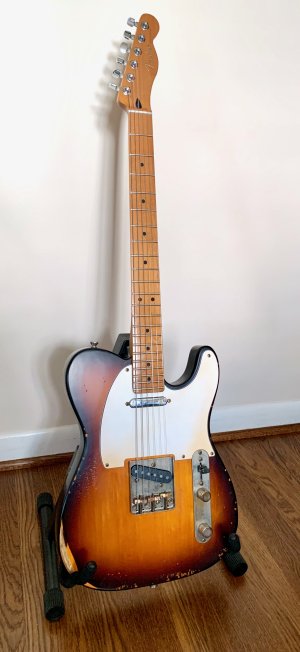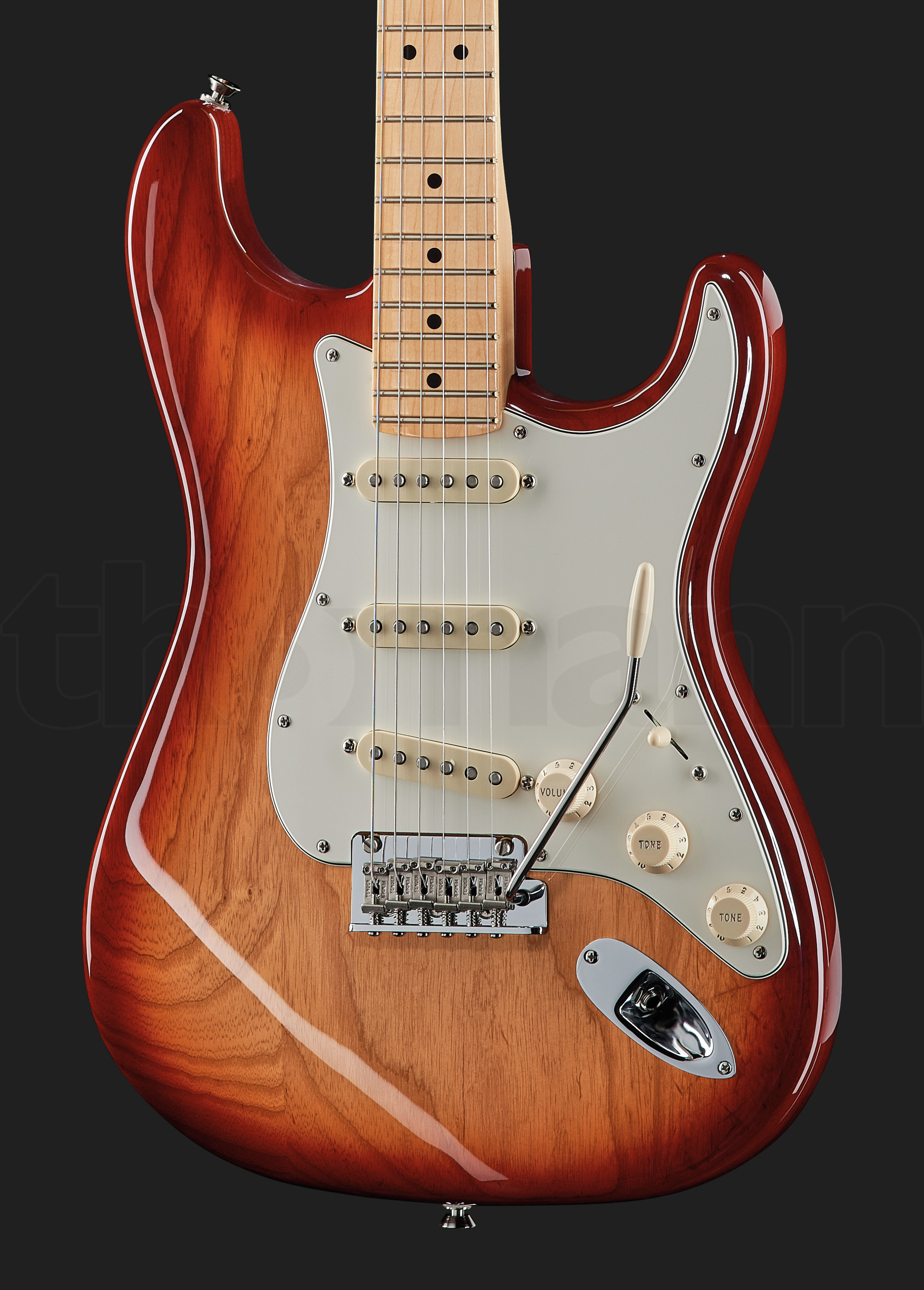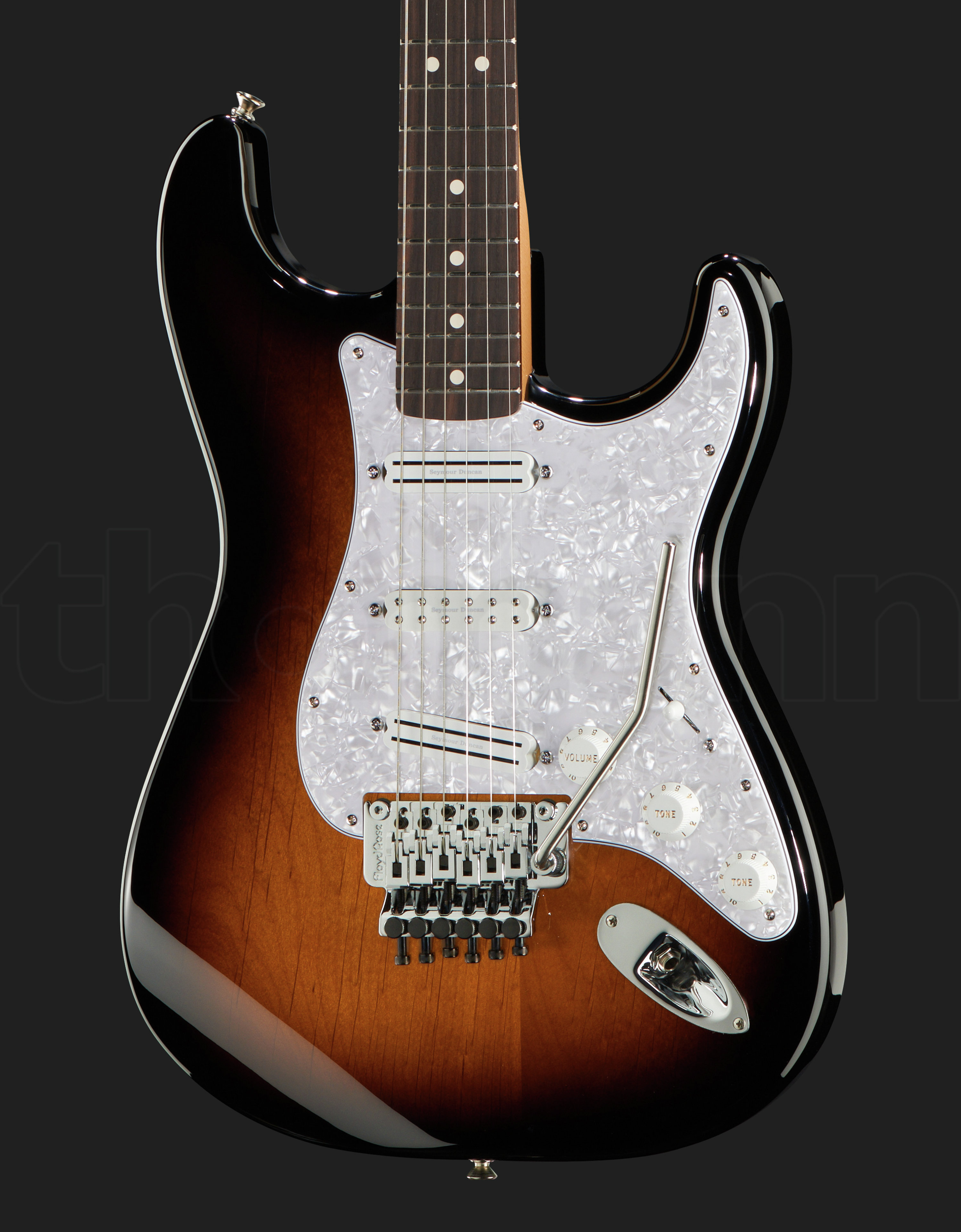DaveG_NJ
Newbie
- Messages
- 4
Hi there. I'm on my first Partscaster build and have been very lucky so far. I picked up a genuine Fender roasted maple Telecaster neck on Amazon (of all places). Fit was perfect. 12" radius, medium jumbo frets. Frets were perfect out of the box (and I like a low action). A truss rod adjustment was all that was needed. The guitar was on its way to becoming my #1 except the neck was too darn thin. My current #1 is a Richie Kotzen model, so you know I like baseball bat necks.
So I ordered a Fatback roasted maple Warmoth neck out of the showcase. SS6150 frets and a compound 10-16" radius. Came today and I thought I'd roll the dice and strung it up. Feels great and fits in the pocket just fine, but notes between the 15th and 20th frets on the high-e string are fretting out. Not just buzzing, but I can move 3 frets away and the note doesn't change. You can SEE with the naked eye which frets are high - no rocker needed.
OK, I guess that's a potential situation Warmoth warms about (though magically, mass-produced Fender got a neck perfect). So my questions are:
- when leveling a new neck, is removing metal always the solution? Should I try to "press-in" or tap-in a fret that may be high?
- can I use a regular fret file with SS frets?
- does this have anything to do with the compound radius (my first)?
I guess I don't understand how a fretboard could be level but the frets so far off from one another. I would think the thickness doesn't change but a few microns along the wire (that's why I asked about seating the frets instead of shaving them).
So I ordered a Fatback roasted maple Warmoth neck out of the showcase. SS6150 frets and a compound 10-16" radius. Came today and I thought I'd roll the dice and strung it up. Feels great and fits in the pocket just fine, but notes between the 15th and 20th frets on the high-e string are fretting out. Not just buzzing, but I can move 3 frets away and the note doesn't change. You can SEE with the naked eye which frets are high - no rocker needed.
OK, I guess that's a potential situation Warmoth warms about (though magically, mass-produced Fender got a neck perfect). So my questions are:
- when leveling a new neck, is removing metal always the solution? Should I try to "press-in" or tap-in a fret that may be high?
- can I use a regular fret file with SS frets?
- does this have anything to do with the compound radius (my first)?
I guess I don't understand how a fretboard could be level but the frets so far off from one another. I would think the thickness doesn't change but a few microns along the wire (that's why I asked about seating the frets instead of shaving them).








